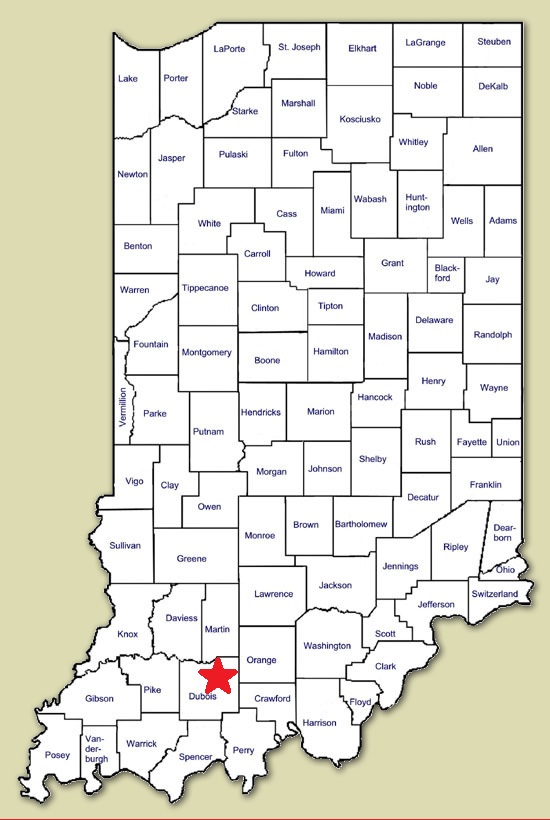UPDATE :
On January 10th, 2016, a commercial turkey facility in Southern Indiana observed reduced water and feed consumption in the flock. Over the course of the next 2 days the flock experienced increasing mortality rates, greatly over baseline. Samples were taken and on January 15th, the diagnosis of highly pathogenic avian influenza H7N8 (HPAI H7N8) was confirmed. Genetic analysis revealed that this subtype was of North American origin and subsequent surveillance in the control zone demonstrated the presence of a low pathogenicity avian influenza H7N8 (LPAI H7N8) of North American origin circulating in related poultry flocks. The HPAI H7N8 and LPAI H7N8 were largely confined within a single poultry production network and its dangerous contact premises.
It is likely that the LPAI H7N8 had been circulating within the affected poultry network undetected, and that it evolved into an HPAI form. A closely related LPAI H7N8 was detected in a wild gadwall in Kentucky last year as part of the larger wild bird avian influenza surveillance effort. It is possible that the LPAI H7N8 from wild waterfowl crossed into domestic poultry, most likely through a biosecurity breach.
A rapid response was effected and all infected or dangerous contact premises were depopulated. Carcasses were remediated largely by composting. As of the date of this bulletin, there have been no further detections of either HPAI or LPAI H7N8 within or outside of the control zone in domestic poultry.
Original Post:
As you may be aware, earlier today the USDA confirmed a case of Highly Pathogenic Avian Influenza (HPAI) H7N8 in a commercial turkey flock in Dubois County, Indiana. The full announcement from the USDA is included below, along with a map of Indiana marking Dubois County. If you have not done so already, we encourage you to look over our HPAI Checklist to review and enhance your bio-security and preparedness plans. The ZAHP Fusion Center will share additional information as we learn more.

Having trouble viewing this email? View it as a Web page. USDA Animal and Plant Health Inspection Service sent this bulletin at 01/15/2016 11:05 AM EST USDA Animal and Plant Health Inspection Service sent this bulletin at 01/15/2016 11:05 AM EST
USDA Confirms Highly Pathogenic H7N8 Avian Influenza in a Commercial Turkey Flock in Dubois County, IndianaWASHINGTON, January 15, 2016 — The United States Department of Agriculture’s (USDA) Animal and Plant Health Inspection Service (APHIS) has confirmed the presence of highly pathogenic H7N8 avian influenza (HPAI) in a commercial turkey flock in Dubois County, Indiana. This is a different strain of HPAI than the strains that caused the 2015 outbreak. There are no known cases of H7N8 infections in humans. As a reminder, the proper handling and cooking of poultry and eggs to an internal temperature of 165 ˚F kills bacteria and viruses, including HPAI. Samples from the turkey flock, which experienced increased mortality, were tested at the Indiana Animal Disease Diagnostic Laboratory at Purdue University, which is a part of USDA’s National Animal Health Laboratory Network, and confirmed by USDA this morning. APHIS is working closely with the Indiana State Board of Animal Health on a joint incident response. State officials quarantined the affected premises and depopulation of birds on the premises has already begun. Depopulation prevents the spread of the disease. Birds from the flock will not enter the food system. As part of existing avian influenza response plans, Federal and State partners are working jointly on additional surveillance and testing in the nearby area. The rapid testing and response in this incident is the result of months of planning with local, state, federal and industry partners to ensure the most efficient and effective coordination. Since the previous HPAI detections in 2015, APHIS and its state and industry partners have learned valuable lessons to help implement stronger preparedness and response capabilities. In September, APHIS published a HPAI Fall Preparedness and Response Plan that captures the results of this planning effort, organizing information on preparatory activities, policy decisions and updated strategy documents. The United States has the strongest AI surveillance program in the world, and USDA is working with its partners to actively look for the disease in commercial poultry operations, live bird markets and in migratory wild bird populations. Anyone involved with poultry production, from the small backyard to the large commercial producer, should review their biosecurity activities to assure the health of their birds. To facilitate such a review, a biosecurity self-assessment and educational materials can be found at http://www.uspoultry.org/animal_husbandry/intro.cfm In addition to practicing good biosecurity, all bird owners should prevent contact between their birds and wild birds and report sick birds or unusual bird deaths to State/Federal officials, either through their state veterinarian or through USDA’s toll-free number at 1-866-536-7593. Additional information on biosecurity for backyard flocks can be found at http://healthybirds.aphis.usda.gov. Additional background Avian influenza (AI) is caused by an influenza type A virus which can infect poultry (such as chickens, turkeys, pheasants, quail, domestic ducks, geese and guinea fowl) and is carried by free flying waterfowl such as ducks, geese and shorebirds. AI viruses are classified by a combination of two groups of proteins: hemagglutinin or “H” proteins, of which there are 16 (H1–H16), and neuraminidase or “N” proteins, of which there are 9 (N1–N9). Many different combinations of “H” and “N” proteins are possible. Each combination is considered a different subtype, and can be further broken down into different strains. AI viruses are further classified by their pathogenicity (low or high)— the ability of a particular virus strain to produce disease in domestic chickens. #
|

